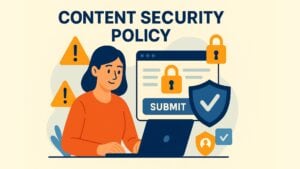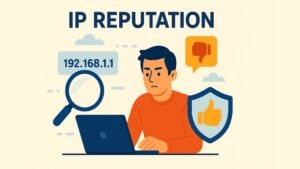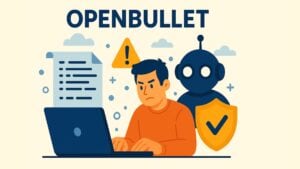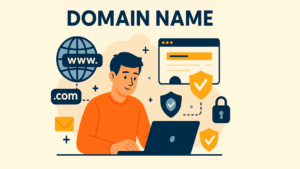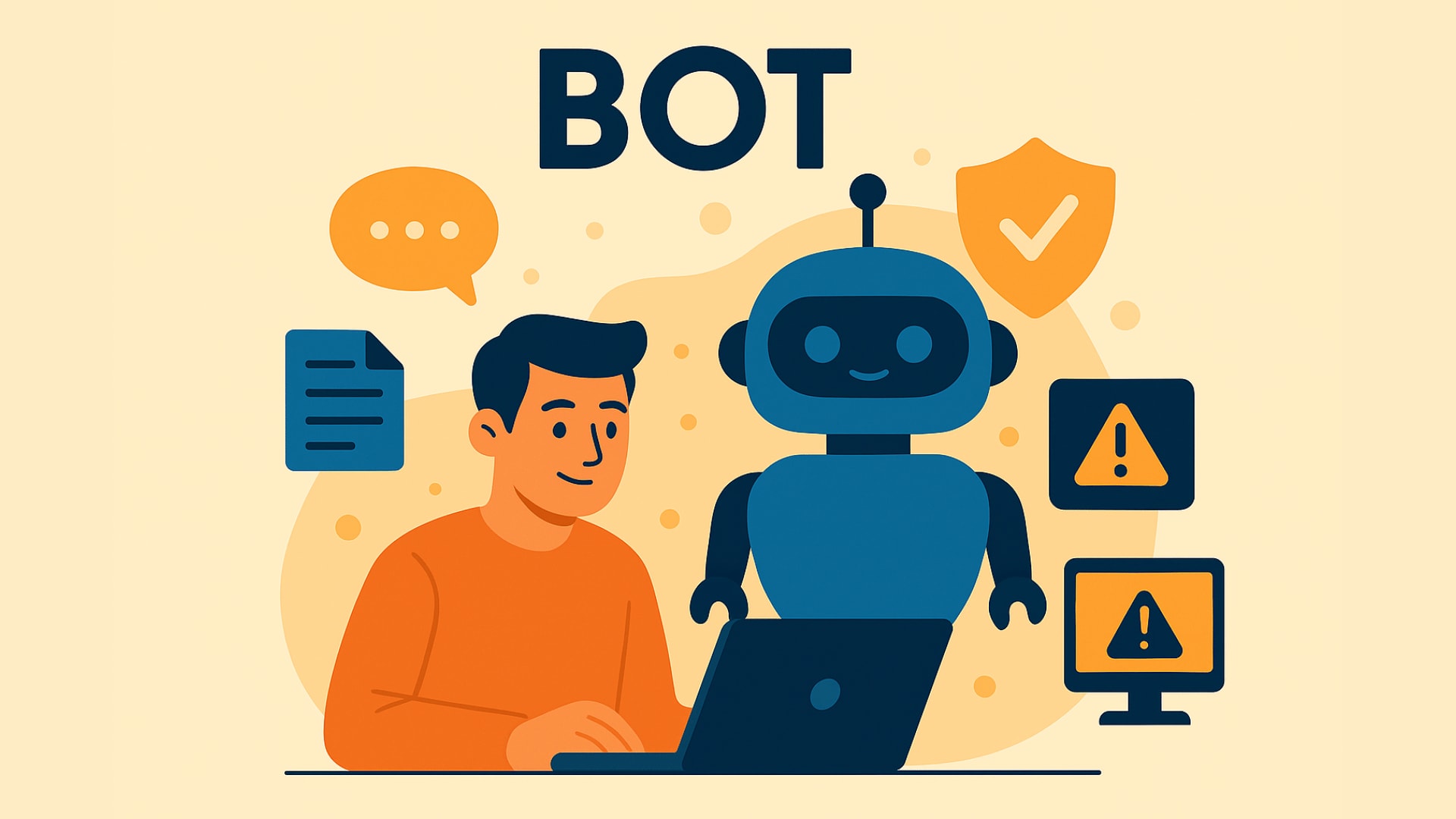
Imagine you’ve built a website with all your hard work, offering the perfect experience for your users. But then you notice unusual activity — your site slows down, forms are filled out with strange data and you see traffic coming from places you don’t recognize. What’s going on? It’s likely that bots are at work.
Table of contents
What is a Bot?
A bot, short for “robot,” is a type of software that automates tasks on the internet. These tasks can range from simple actions like filling out forms to more complex tasks like stealing information or overwhelming a website’s server with fake traffic.
At their core, they are just programs designed to complete specific tasks automatically. Think of them like workers in a factory—they do the same task over and over again, but they don’t need breaks or supervision. They can be used for a wide variety of reasons, both good and bad.
Some are created to help businesses — these are often called helpful bots. For example, a bot might visit your website to help with things like indexing for search engines (like Google), checking website performance, or assisting with customer service by answering questions via chat.
But some are designed with malicious intent. These bad bots can cause all sorts of problems, from slowing down your website to stealing sensitive information. We’ll dive into both types of bots and the risks they can pose to your website.
Types of Bots
Bots can be categorized into two broad groups: helpful bots and harmful bots. Let’s take a look at each.
Helpful Bots
While some bots are created with bad intentions, many have beneficial purposes and play a crucial role in enhancing your website’s functionality. For instance, search engine bots like Googlebot crawl your website to index its content properly and ensure it appears in relevant search results. Chatbots assist customers by answering their questions or guiding them through your website.
Monitoring bots keep track of how your website is performing, providing data on uptime, page load times, and other key metrics. They help businesses ensure that their sites run smoothly.
Harmful Bots
On the flip side, some are designed to disrupt your website, steal data, or cause harm. DDoS bots (used in Distributed Denial of Service attacks) overwhelm your server with traffic, causing slowdowns or crashes. Spam bots submit fake information through forms or create fraudulent accounts, filling your site with unwanted content.
Scraper bots steal your content, including pricing and product descriptions, which can lead to intellectual property theft. Credential stuffing bots try to use stolen usernames and passwords to access user accounts, leading to potential data breaches or fraud.
Why Bots Matter for Your Website
Bots can have a serious impact on your website’s performance and security. Here’s why it’s essential to understand and protect your site from bot traffic:
- Performance Risks: Especially those involved in DDoS attacks, can overwhelm your website’s server, causing slow performance or complete outages. This disrupts your site and can frustrate your customers.
- Data Theft and Fraud: Malicious bots can steal sensitive information, such as customer details, login credentials, or intellectual property, leading to financial losses and potential legal issues.
- Skewed Analytics: They can create false interactions on your site, distorting your data and making it harder to understand real customer behavior. This could lead to misguided marketing decisions or ineffective strategies.
- Reputation Damage: Spam bots and scrapers can flood your site with irrelevant content or steal your data, giving your business a bad reputation online.
How Are Bots Made?
They are created through programming and scripting by developers. They can range from simple scripts to sophisticated software that mimics human behavior. Typically, bot creators write the code using languages like Python or JavaScript, leveraging libraries and frameworks designed for automation.
Web scraping bots navigate websites and automatically extract data like product prices, user reviews, and public information. DDoS bots spread across machines, forming a botnet. Hackers remotely control them to flood target websites with traffic.
Creating one is relatively easy for skilled programmers, which is why bot traffic is a growing concern for businesses. While some are built for beneficial purposes, others are designed to exploit websites for malicious intent.
Legal Aspects Around Bots
The use of bots raises important legal questions, particularly when it comes to data privacy and intellectual property. Many businesses face scraping bots that steal their content or data, which can violate copyright laws. Some jurisdictions have laws specifically addressing the issue of bot-generated traffic and its potential harm to businesses.
The Computer Fraud and Abuse Act (CFAA) in the U.S. makes it illegal to access a computer system without authorization. This includes using bots to scrape data from websites without permission. Similarly, the General Data Protection Regulation (GDPR) in the European Union requires companies to protect user data. It also mandates preventing unauthorized access to personal information.
While some may operate in a legal gray area, businesses that are victims of malicious activity can pursue legal action under certain circumstances, such as when they violate terms of service or infringe on intellectual property rights.
How to Protect Your Website
Now that we understand the risks, let’s look at how you can protect your website from them. There are several steps you can take to mitigate bot traffic and minimize its impact.
CAPTCHA Protection
A simple and effective way to them is by using a CAPTCHA system. CAPTCHA presents a challenge that’s easy for humans but difficult for bots, such as typing distorted characters or identifying objects in images. captcha.eu offers a seamless, privacy-compliant CAPTCHA solution that doesn’t disrupt the user experience. Unlike traditional CAPTCHAs, captcha.eu works invisibly in the background, preventing attacks without requiring additional input from legitimate users.
Other Protection Methods
Using a Web Application Firewall (WAF) is another effective way to block malicious traffic before it reaches your website. A WAF acts as a filter between your website and incoming traffic, identifying and blocking harmful bot requests. Additionally, rate limiting—which restricts the number of requests a user can make in a certain time frame — helps prevent bots from overwhelming your server.
Monitoring Traffic
Regularly monitor your website traffic for unusual patterns that might indicate bot activity. For example, if you see a sudden surge in traffic from unexpected locations or at odd times, it could be a sign that bots are at work.
Outlook
As they continue to evolve, so do the methods used to counter them. With advancements in machine learning and AI, they are becoming more sophisticated and harder to detect. In response, bot protection systems are also improving, using behavioral analytics and adaptive defense strategies to identify and block bots in real-time.
Looking ahead, bot management solutions will become more advanced, helping businesses better distinguish between legitimate users and bots. By implementing smarter security measures and using tools like captcha.eu, website operators can stay one step ahead of evolving threats.
Conclusion
Bots are a double-edged sword — while they can be helpful for improving site performance and user experience, they also pose significant risks if used maliciously. Whether they’re used to scrape content, steal personal information, or disrupt your website, they can have a major impact on your business.
By understanding what they are and how they work, you can take proactive steps to protect your site from bot-related issues. Using CAPTCHA systems, monitoring traffic, and leveraging security tools like captcha.eu are all essential strategies for safeguarding your website.
As bot technology continues to evolve, it’s important to stay informed and adapt your security measures to ensure that your website remains secure and your business continues to thrive online.
100 free requests
You have the opportunity to test and try our product with 100 free requests.
If you have any questions
Contact us
Our support team is available to assist you.
